ALICIA MARTÍN





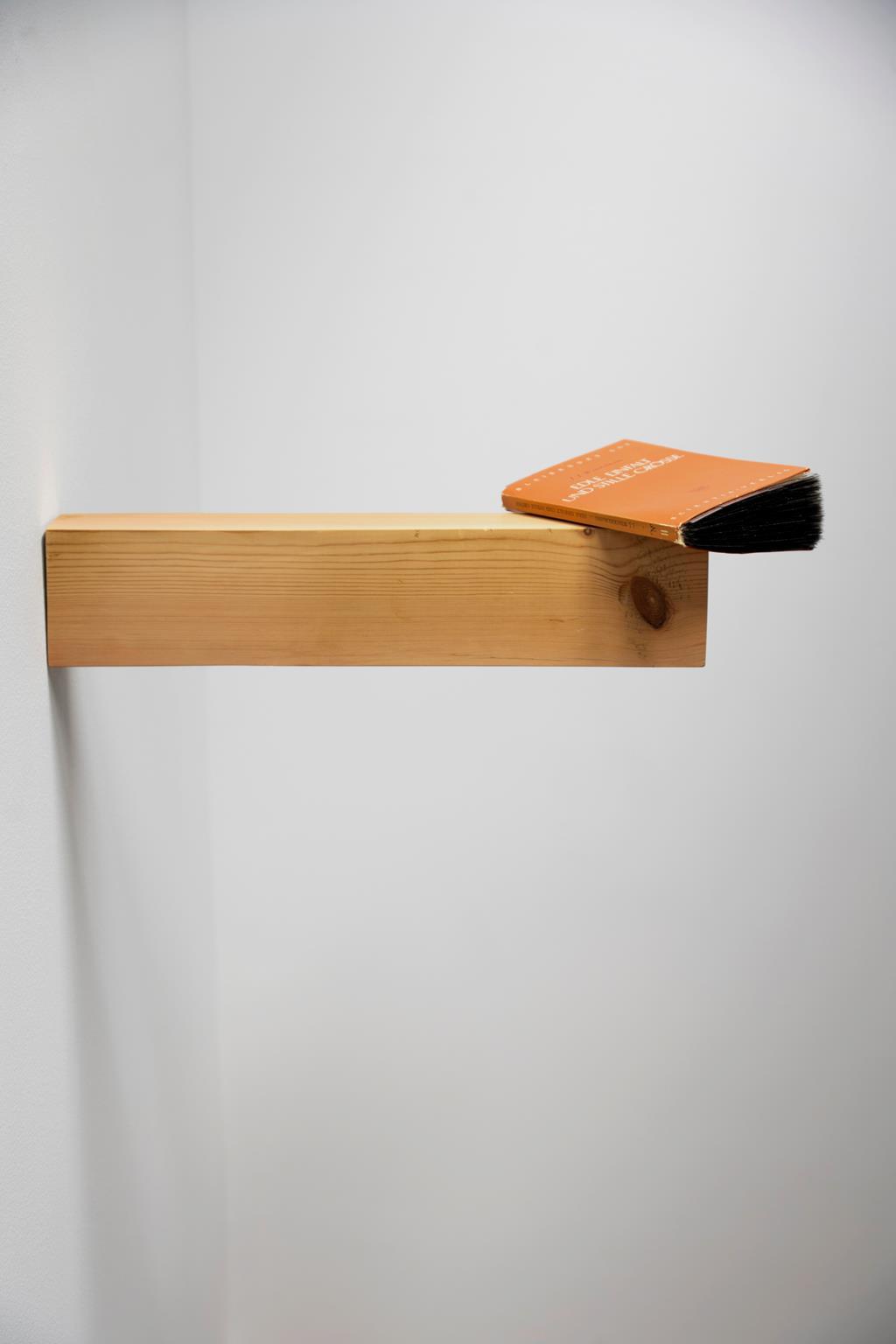

© de este catálogo: Rafael Pérez Hernando © de los textos: Alejandra Marquerie y Alicia Martín
Fotografías de las obras: © Andrés Valentín-Gamazo
Otras fotografías: © Andrés Valentín-Gamazo
Diseño: © Nerea Campos
Todos los derechos reservados.



En el fondo de la calma hay un vértigo.
Contra la tranquila grandeza parte de una sospecha sobre el relato y los fundamentos formales que han articulado el canon de la Historia del Arte a lo largo de los siglos. El título tensiona el principio formulado por Johan Joachim Winckelmann, considerado como uno de los “padres de la Estética”, en el siglo XVIII: “noble sencillez y tranquila grandeza”, que cimentó el paradigma clasicista. Lejos de una oposición frontal, la exposición plantea una fricción con la autoridad del canon que nombra, ordena y jerarquiza.
Con el propósito de señalar la fragilidad de la autoridad estética, la exposición propone una distorsión de los aparatos ideológicos del canon, reapropiándose y tensionando sus formatos tradicionales. La biblioteca, entendida como sistema de ordenación, se presenta hecha añicos, aludiendo a la fragmentación de los saberes legitimados. El retrato, representación normativa de una individualidad particular, aquí se construye mediante la aglomeración de revistas de arte, diluyendo ese sentido de unicidad en una identidad colectiva, en un retrato de retratos. Por su parte, el ornamento clásico, símbolo de la grandeza formal, se revisita en una voluta barroca hecha de malla metálica. Normalmente utilizada como base y armazón de la forma, aquí la malla pasa a un primer plano, planteando el contraste entre la “nobleza del material” y la intención de adornar con un material inadecuado. Así, la forma se mantiene, pero el material la traiciona
Mediante la fragmentación y la subversión de formas establecidas, Contra la tranquila grandeza propone una mirada hacia la tradición desde gestos disruptivos que erosionan la autoridad estética, sus narrativas, símbolos y materiales.
The starting point for Against tranquil grandeur is a suspicion about the narrative and formal foundations that have shaped the canon of Art History over the centuries. The title challenges the principle formulated by Johann Joachim Winckelmann, considered one of the “fathers of aesthetics,” in the 18th century: “noble simplicity and tranquil grandeur,” which cemented the classicist paradigm. Rather than directly opposing this, the exhibition introduces a friction with the authority of the canon that imposes names, orders, and hierarchies
With the aim of exposing the fragility of aesthetic authority, the exhibition offers a distortion of the canon's ideological devices, reappropriating and challenging its traditional formats. The library, understood as a system of organization, is presented as shattered to pieces, alluding to the fragmentation of legitimized forms of knowledge. The portrait, a normative representation of a specific individuality, is constructed here through the accretion of art magazines, diluting the notion of uniqueness into a collective identity a portrait of portraits. Meanwhile, classical ornament, a symbol of formal grandeur, is revisited in the form of a baroque volute made of wire mesh Typically used as a base or skeletal element for the structure, the mesh now takes centre stage, creating a contrast between the "nobility of the material" and the intention to adorn with an inappropriate material The form remains, but the material betrays it.
Through the fragmentation and subversion of established forms, Against tranquil grandeur offers a view of tradition through disruptive gestures that erode aesthetic authority its narratives, symbols, and materials
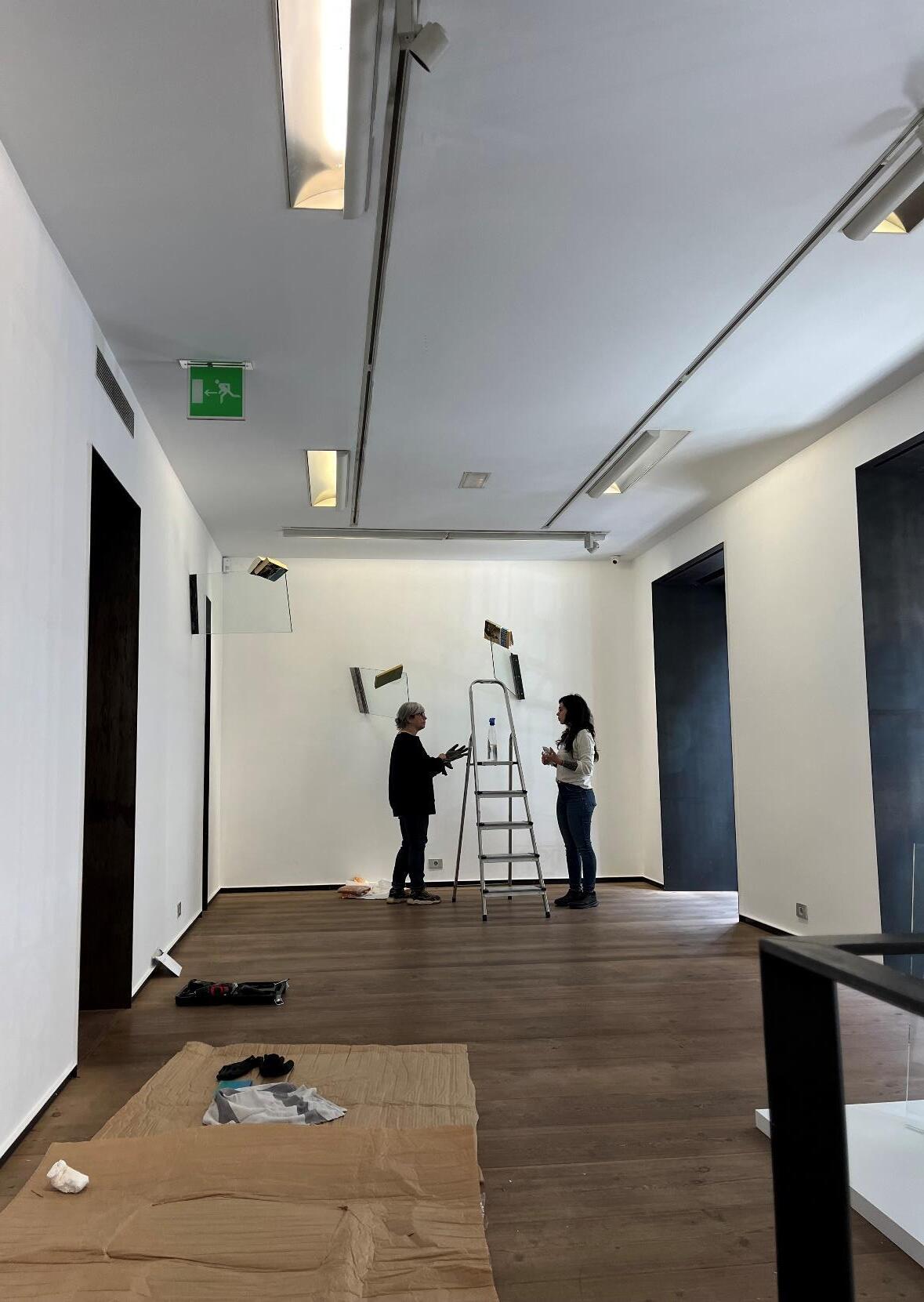
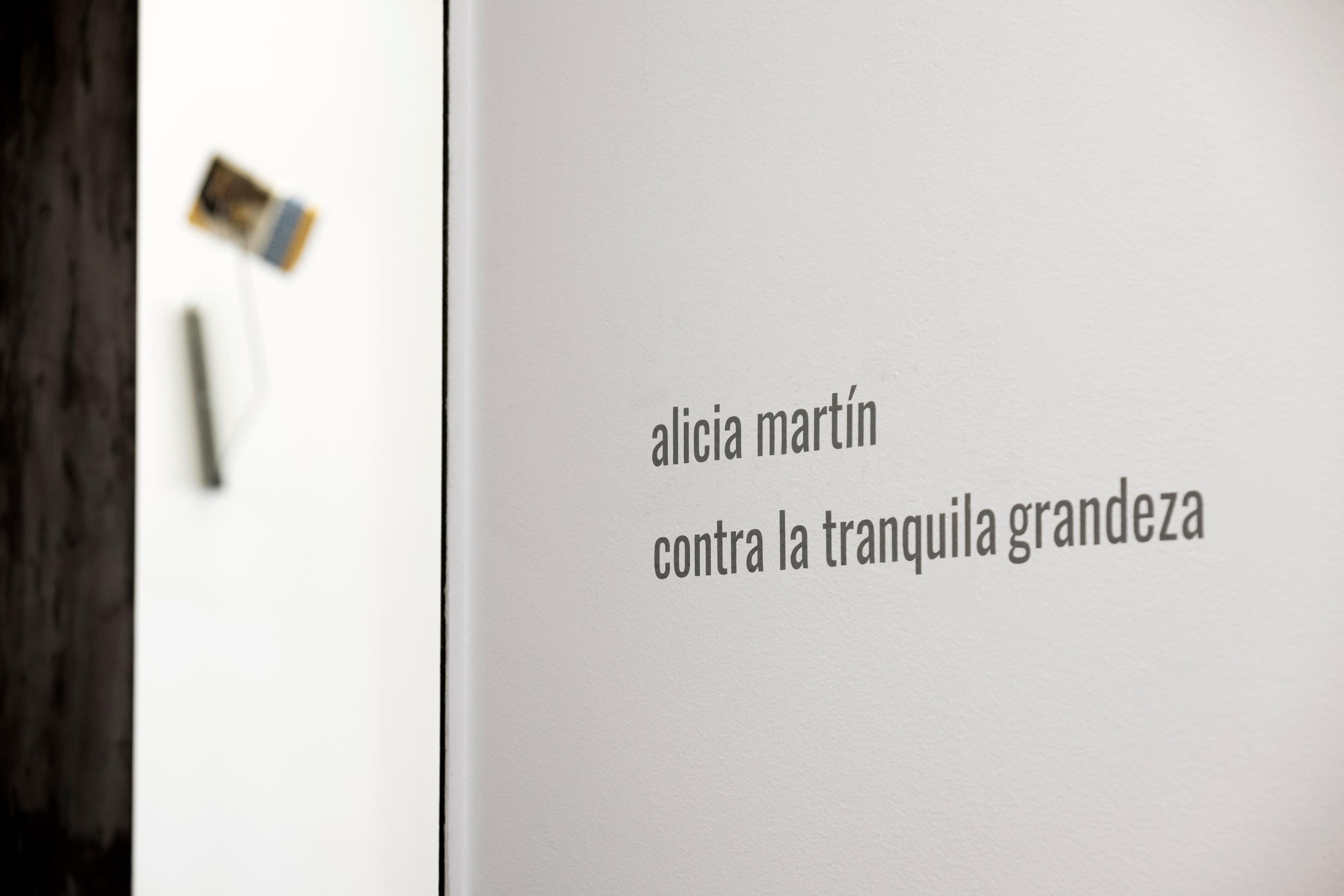
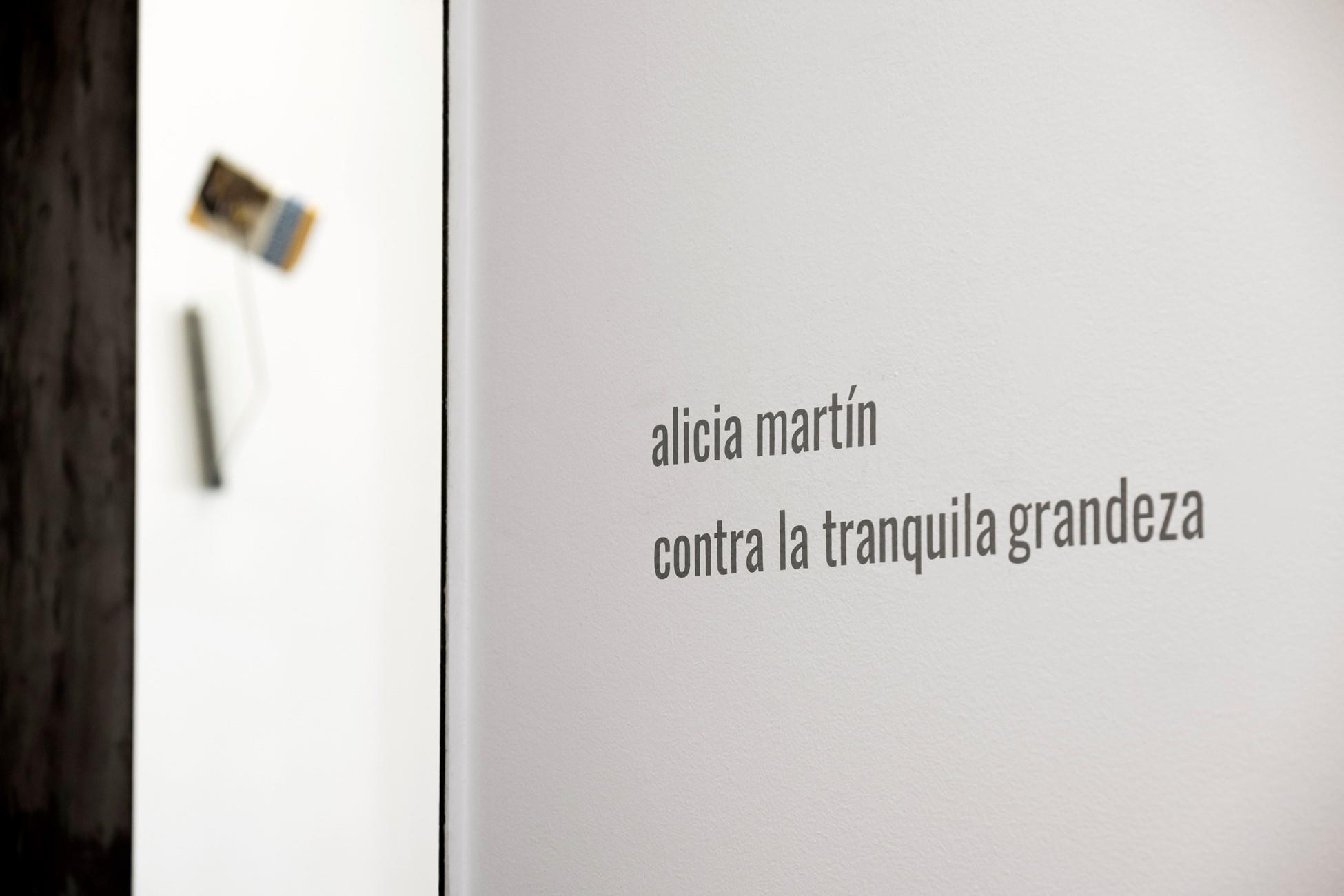
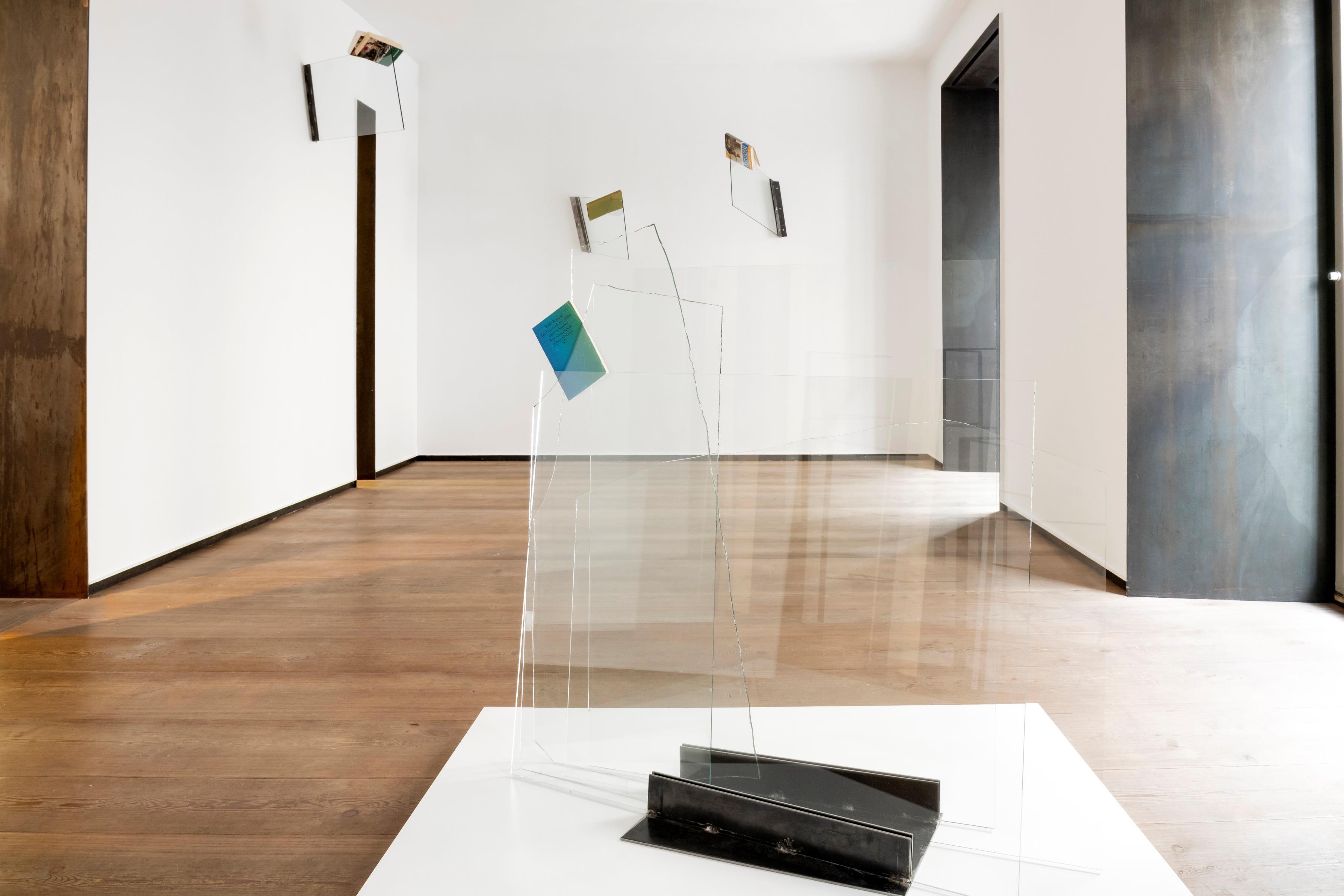

Libro, vidrio templado y hierro
90 x 80 x 74 cm
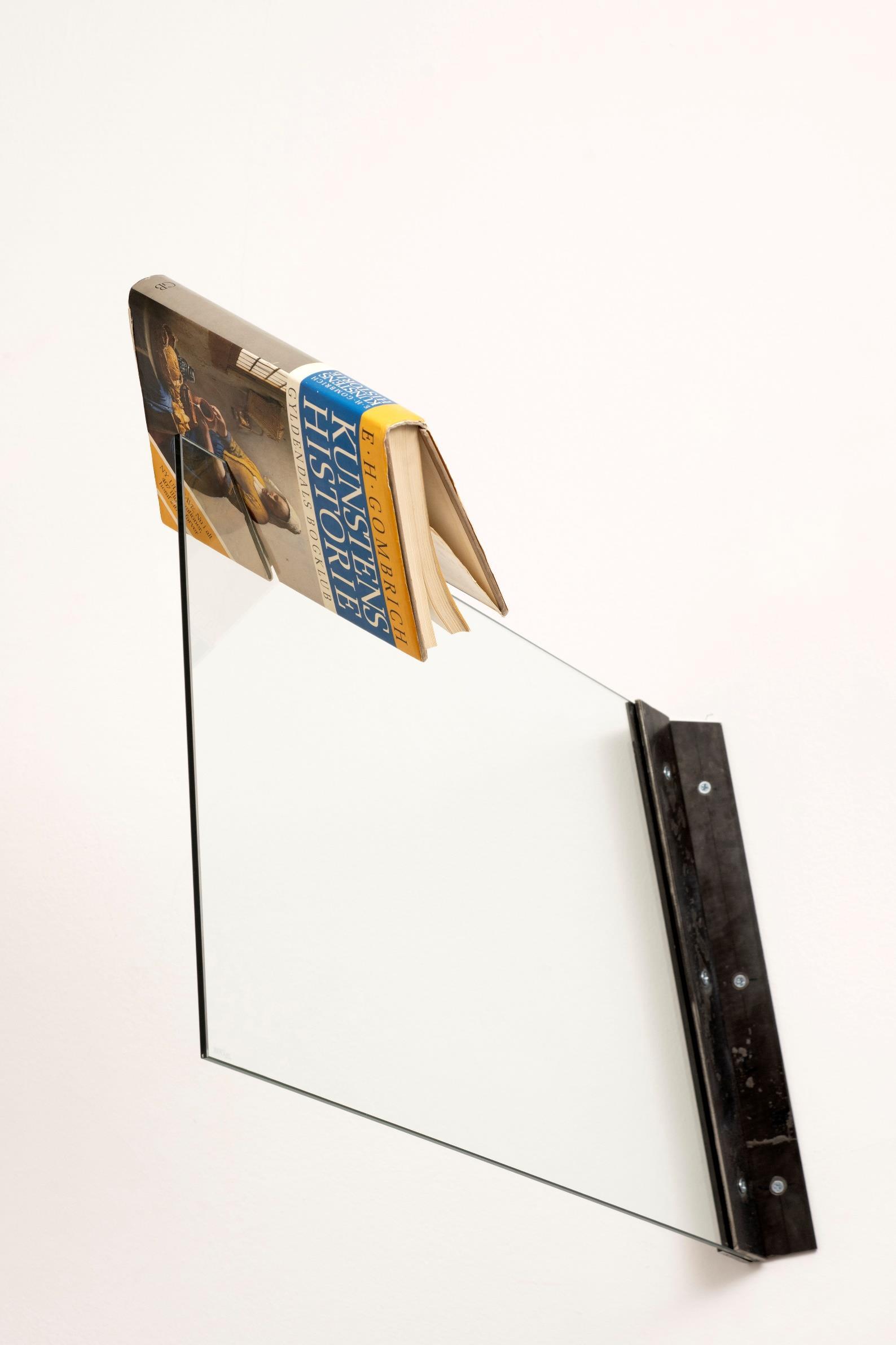

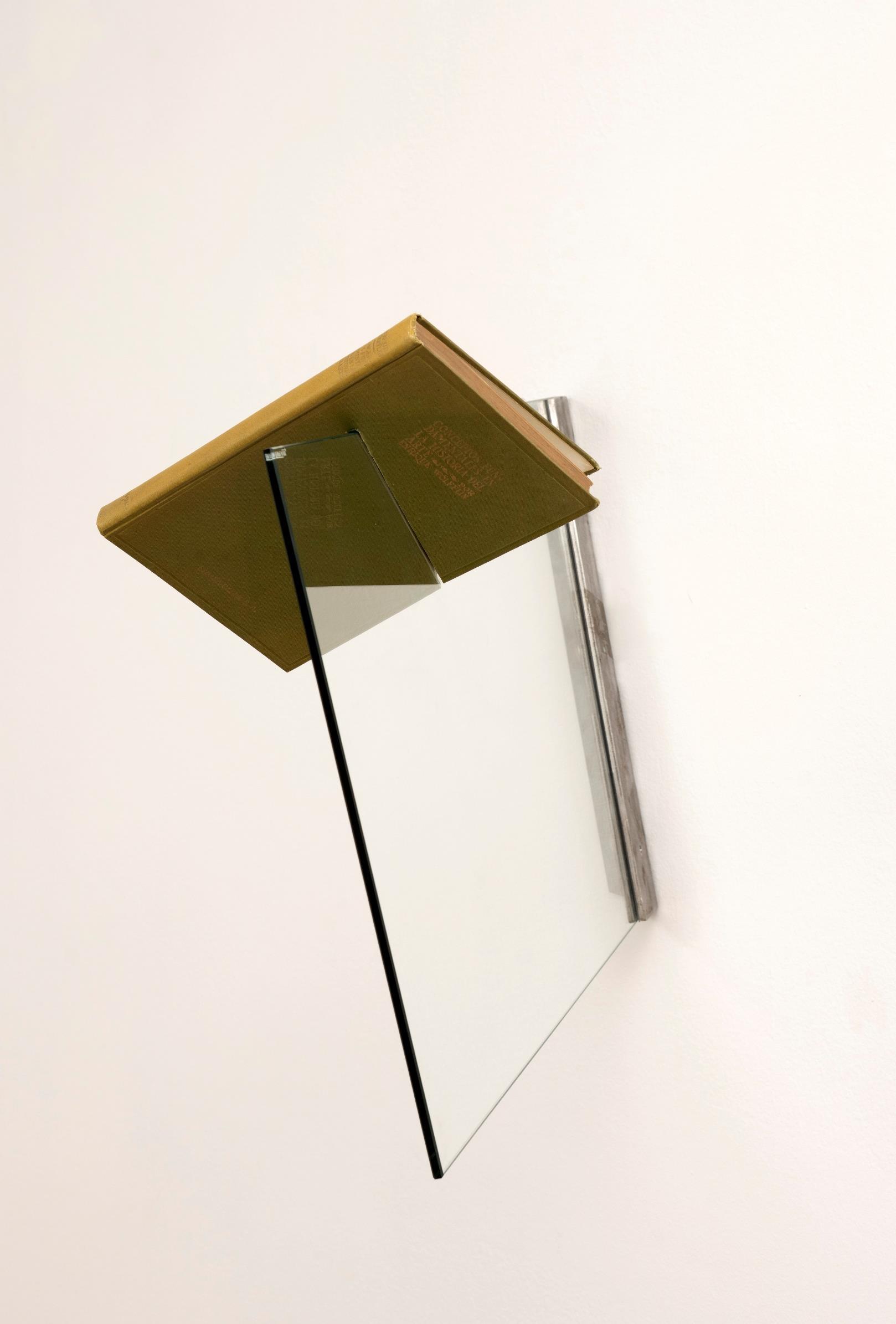

Souvenir III (Wölfflin), 2016
Libro, vidrio templado y hierro
90 x 80 x 74 cm
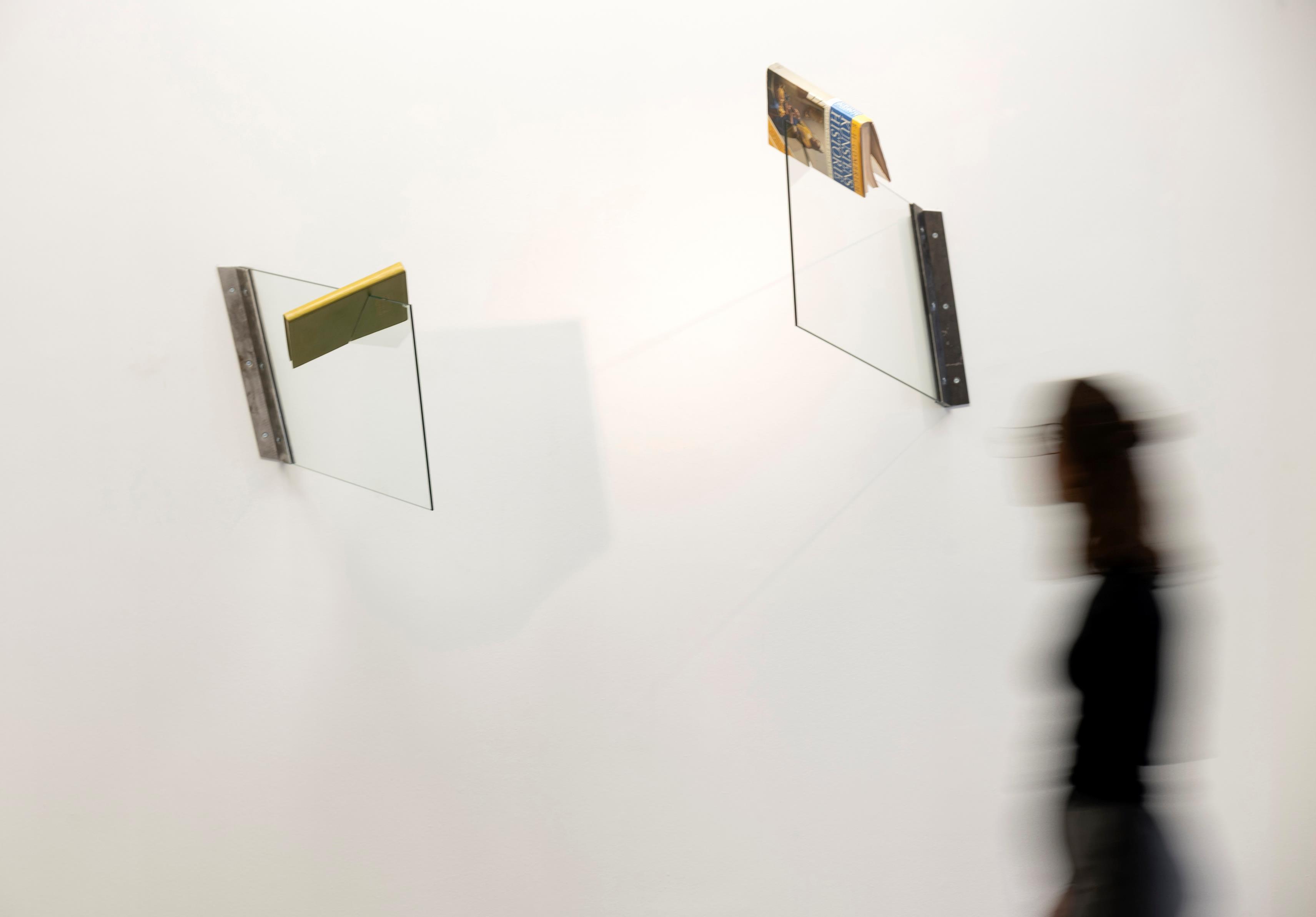

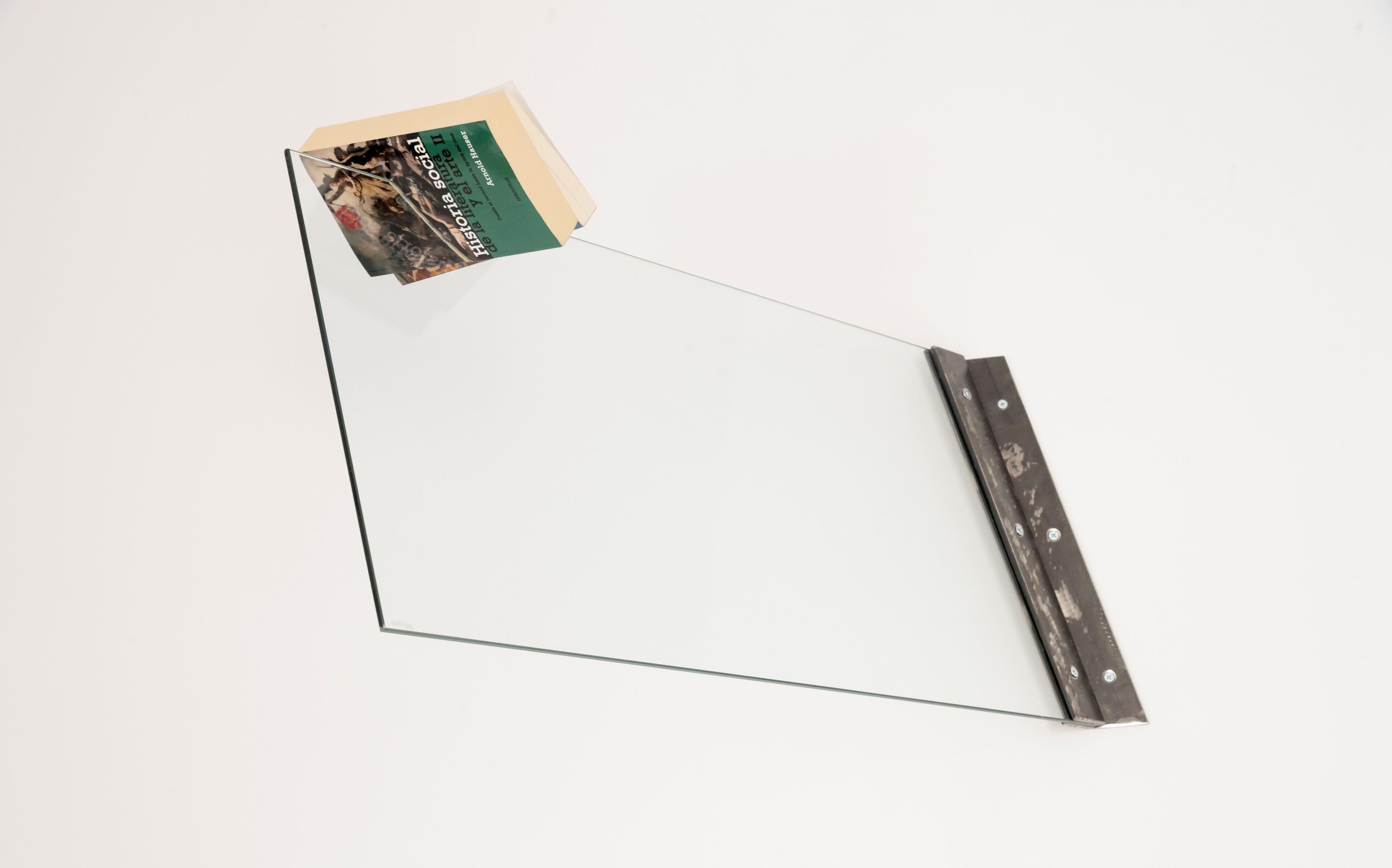
Souvenir IV (Hauser), 2016
90 x 80 x 74 cm

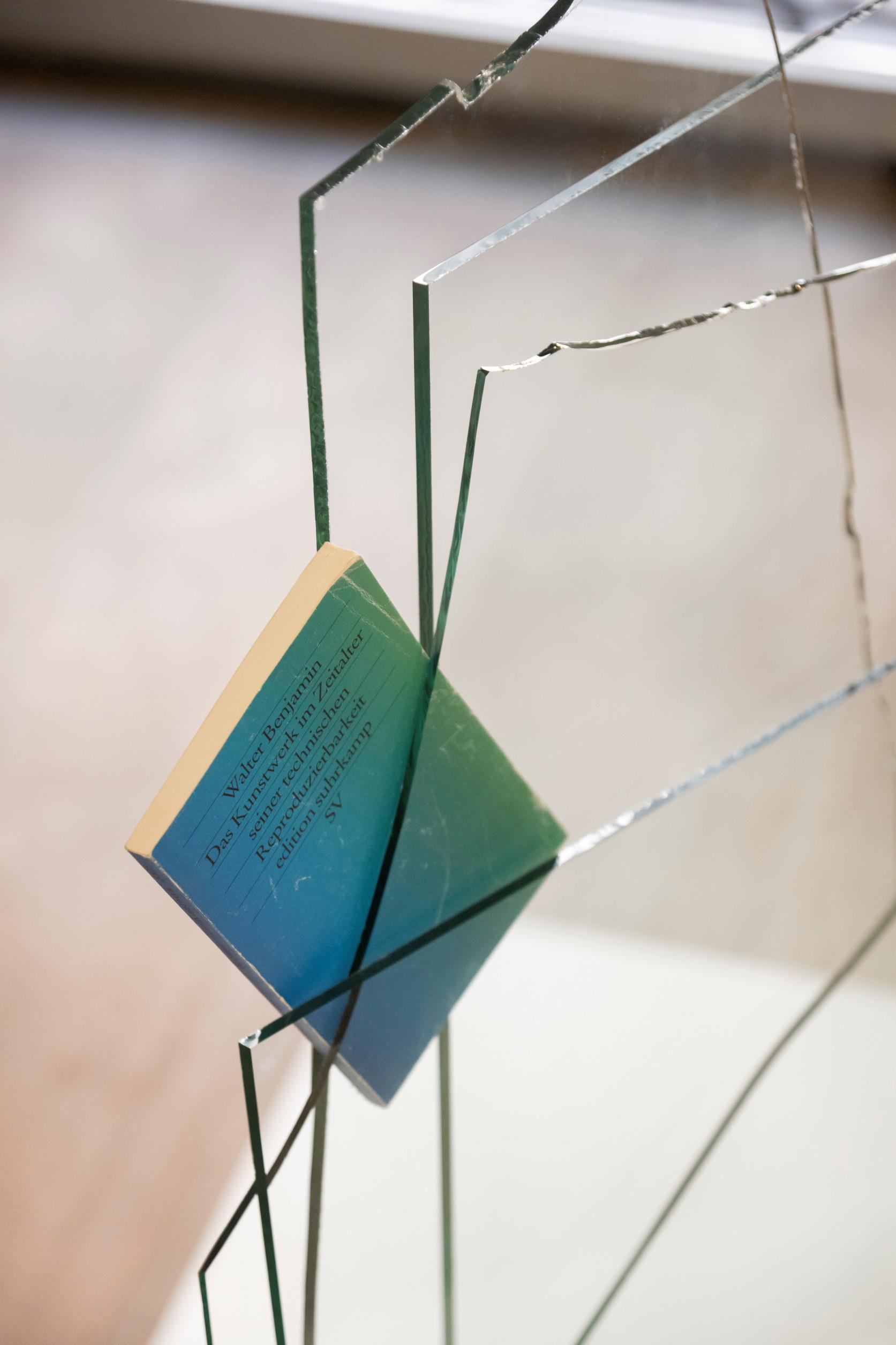


Edle einfalt und stille grösse, 2024
Libro, madera de pino y cuchillas
11 x 19 x 46 cm




Bola, 2025
Libro, madera de pino y hierro
43 x 15 x 13 cm
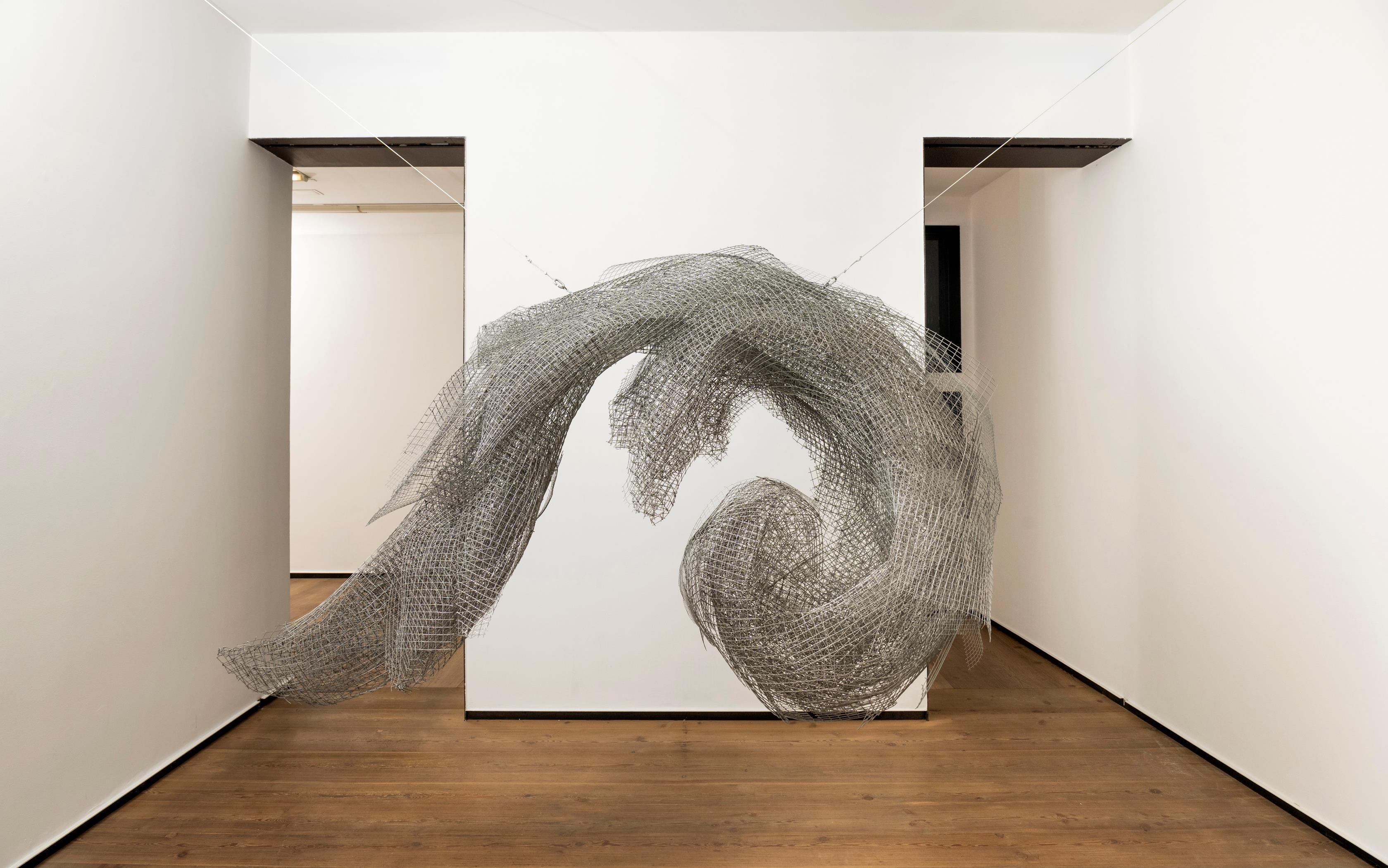

Noble ornamento, 2025
Malla electrosoldada galvanizada
240 x 130 x 80 cm
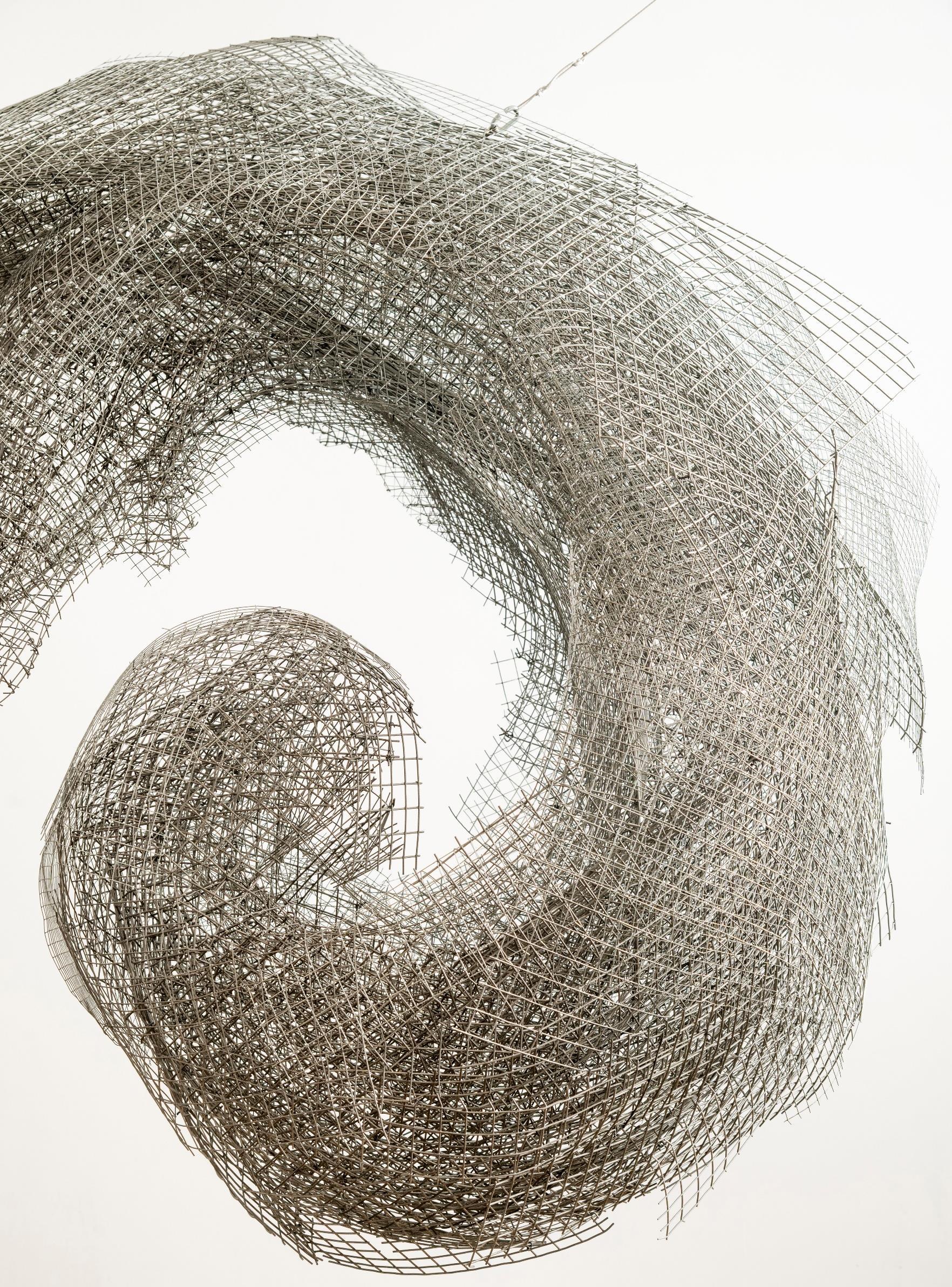



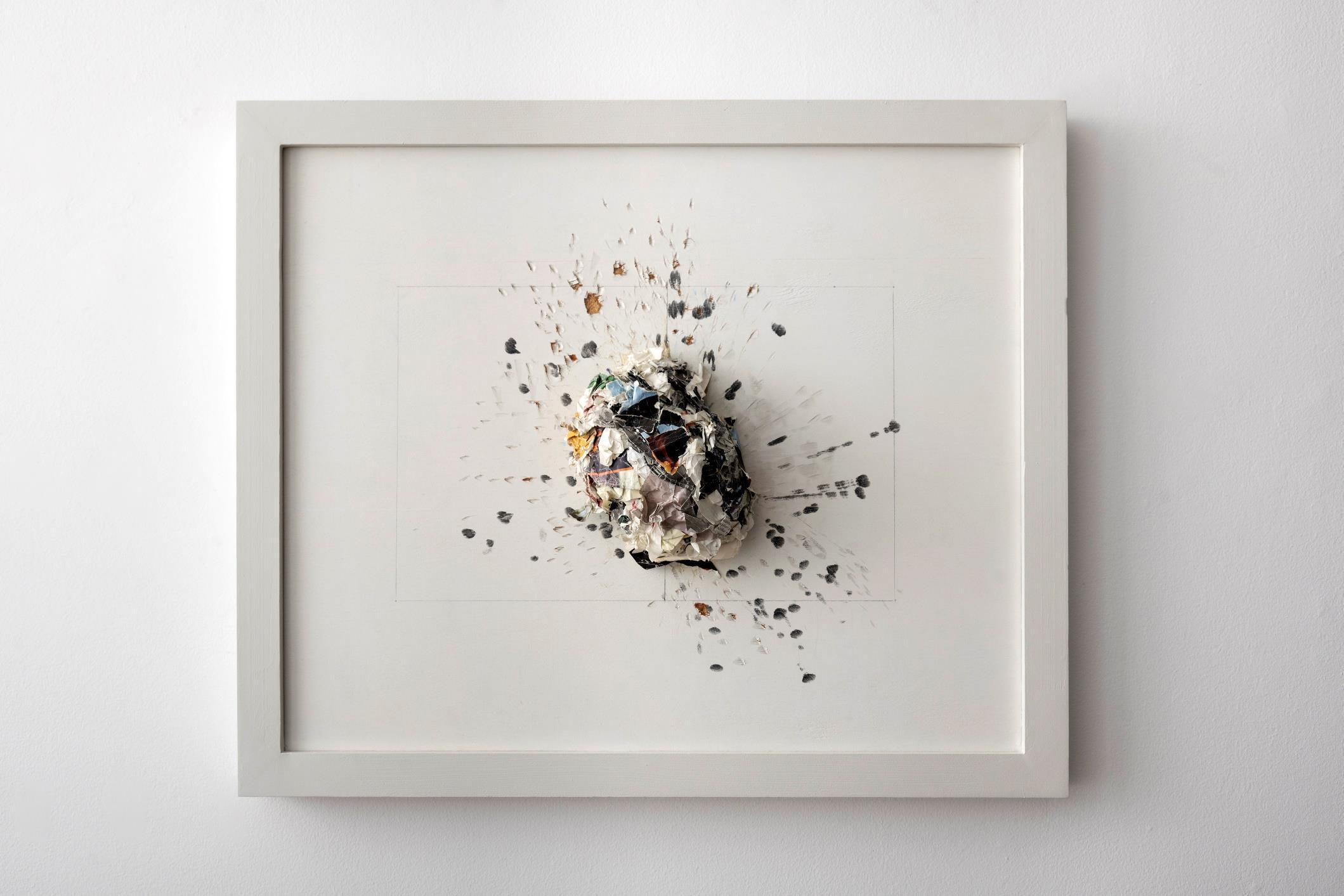

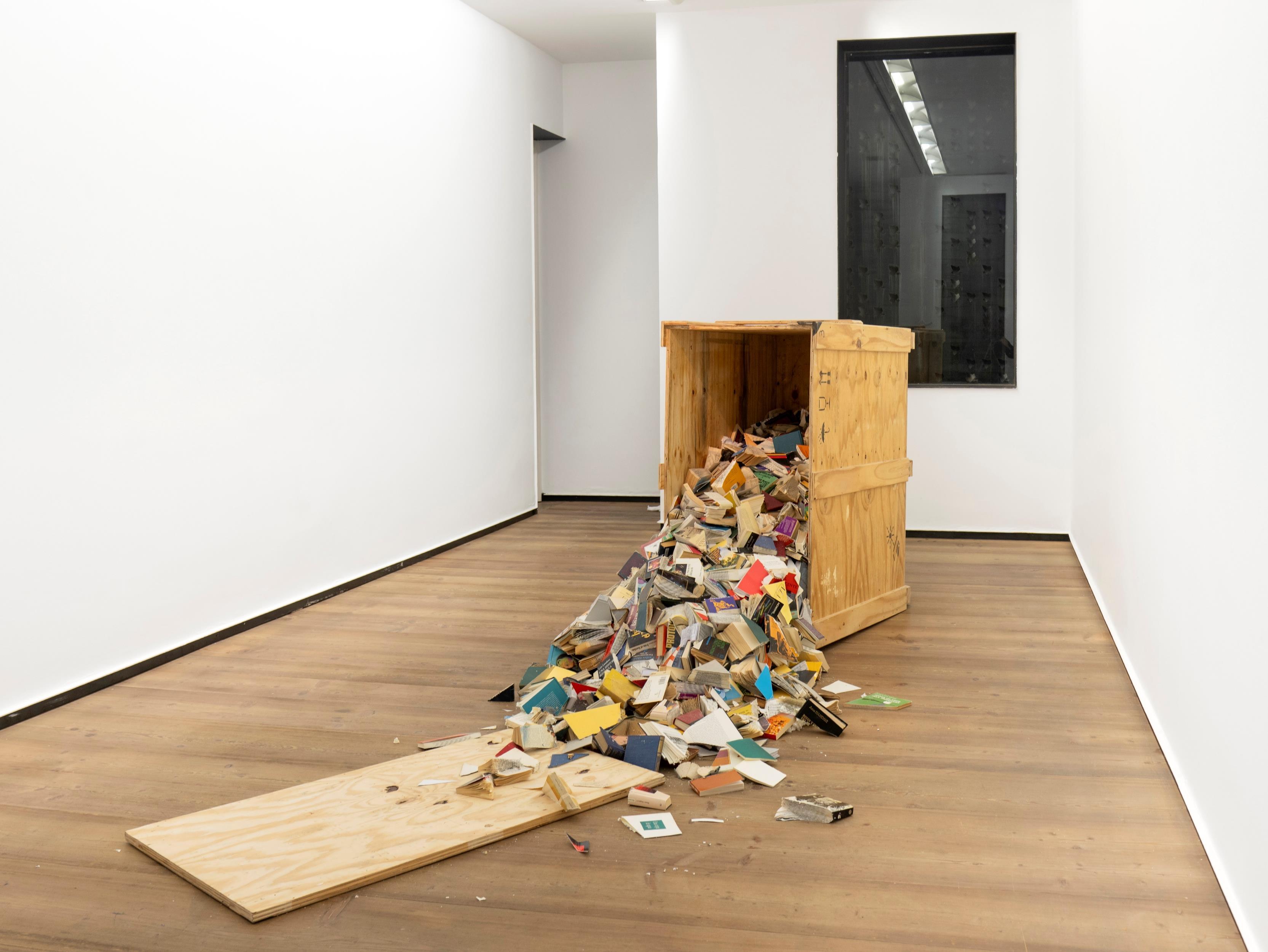

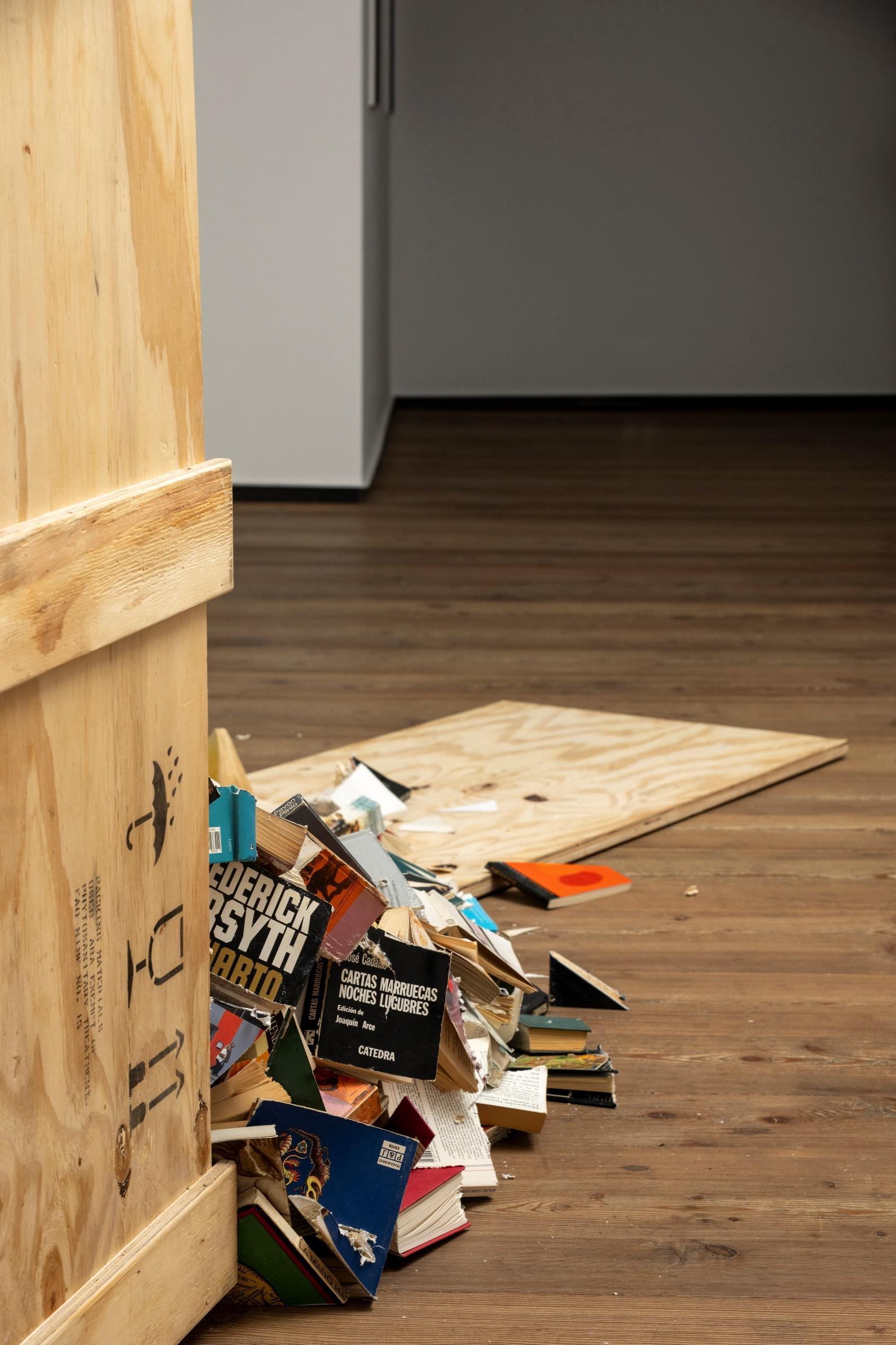
La biblioteca del padre, 2025
Caja de madera y libros
120 x 80 x 200 cm
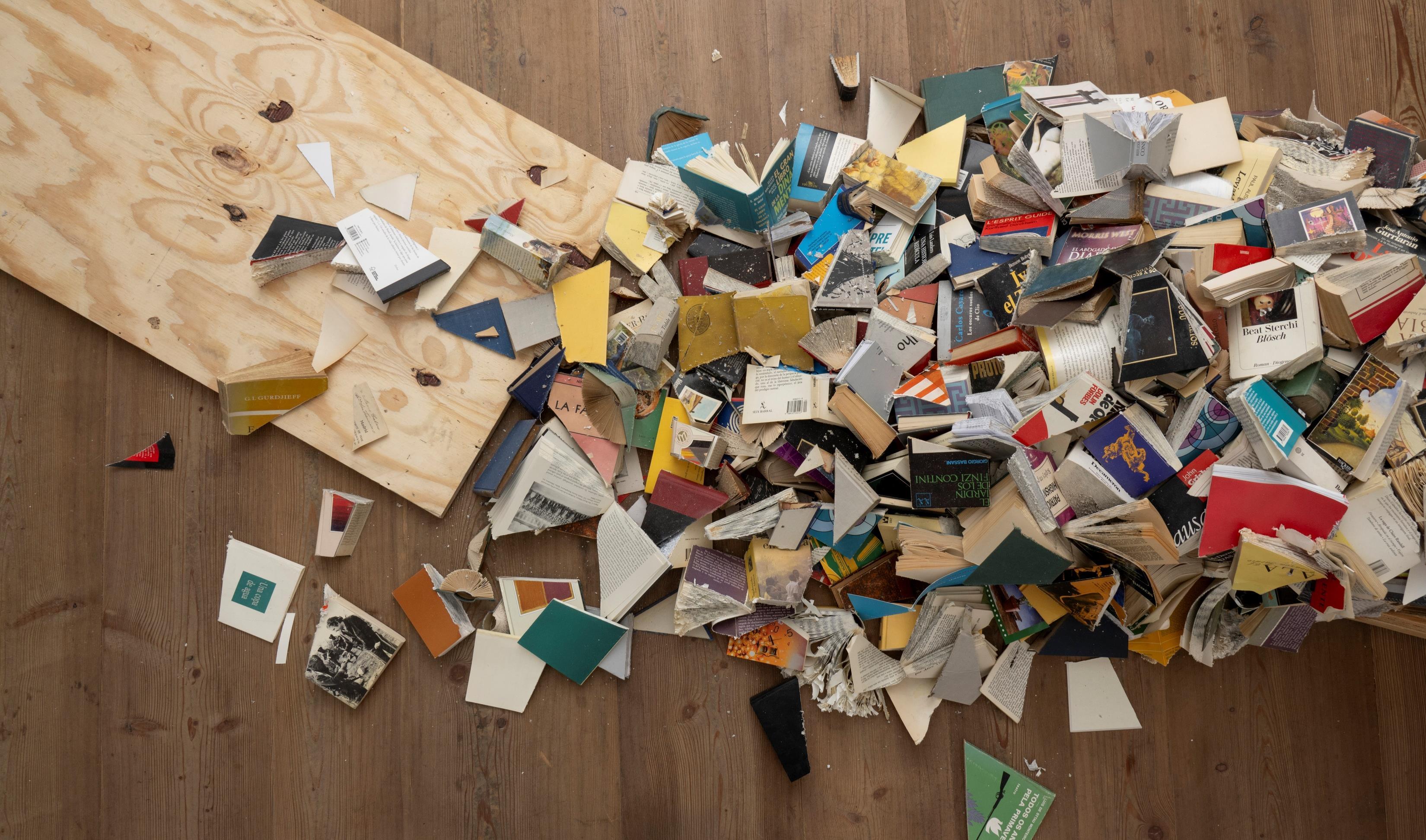


Madrid, 1964
Alicia Martín desarrolla su obra en diferentes disciplinas, escultura, fotografía, vídeo, instalación y dibujo, siendo la escultura el campo en el que ha sido más prolífica y en la que ha obtenido mayor reconocimiento. A principios de los años noventa comienza a trabajar con libros, el elemento que se ha convertido en una de sus señas de identidad. La propia artista dice lo siguiente: “en el trayecto del estudio a mi casa, y de casa al estudio, siempre llevaba un libro, y fue el hecho de leer, y de empezar a pensar en el libro como un objeto, con sus olores y sus texturas, lo que me hizo dar el paso”.
Los libros son la materia prima a partir de la cual elabora casi toda su obra. Desde las fotografías y los montajes en vídeo que elabora a partir de sus composiciones, hasta las esculturas e instalaciones de gran formato donde cientos de libros de diversos colores, tamaños y formas componen grandes estructuras que habitualmente son creadas ad hoc para un espacio público, un museo o una exposición.
El libro como vehículo transmisor de cultura, su universalidad y cotidianidad, dotan a la obra de Alicia Martín de una poderosa carga simbólica y, consecuentemente, de múltiples interpretaciones. Sus trabajos están presentes las principales colecciones institucionales de nuestro país, como el MNCARS, el Museo Municipal de Arte Contemporáneo de Madrid, el Musac de León, el DA2 de Salamanca, el MAS de Santander, CGAC de Santiago de Compostela o el Museo Patio Herreriano de Valladolid. También ha desarrollado diferentes proyectos internacionales en las principales ciudades de Europa, Estados Unidos y América Latina. .
Alicia Martín works in several disciplines: sculpture, photography, video, installation and drawing But it is sculpture in which she has been most prolific and in which she has obtained the greatest recognition. At the beginning of the nineties she began to incorporate books as a physical element in her work, and this has become one of her hallmarks. The artist herself says the following: “On the way from the studio to my house, and from home to the studio, I always used to carry a book, and it was the act of reading, and starting to think of the book as an object, with its smells and its textures, which made me take the step.”
Books are the raw material from which she makes almost all of her work. From the photographs and video montages that she makes from her compositions, to the largeformat sculptures and installations in which hundreds of books of various colours, sizes and shapes make up large structures that are usually created ad hoc for a public space, museum or exhibition.
The book as a vehicle for transmitting culture, its universality and daily life, endows Alicia Martín's work with a powerful symbolic charge and, consequently, with multiple interpretations.
Her works are present in Spain’s leading institutional collections, such as the MNCARS, the Museum of Contemporary Art in Madrid, the Musac in León, the DA2 in Salamanca, the MAS in Santander, the CGAC in Santiago de Compostela and the Patio Herreriano Museum in Valladolid. She has also carried out international projects in major cities of Europe, United States and Latin America.

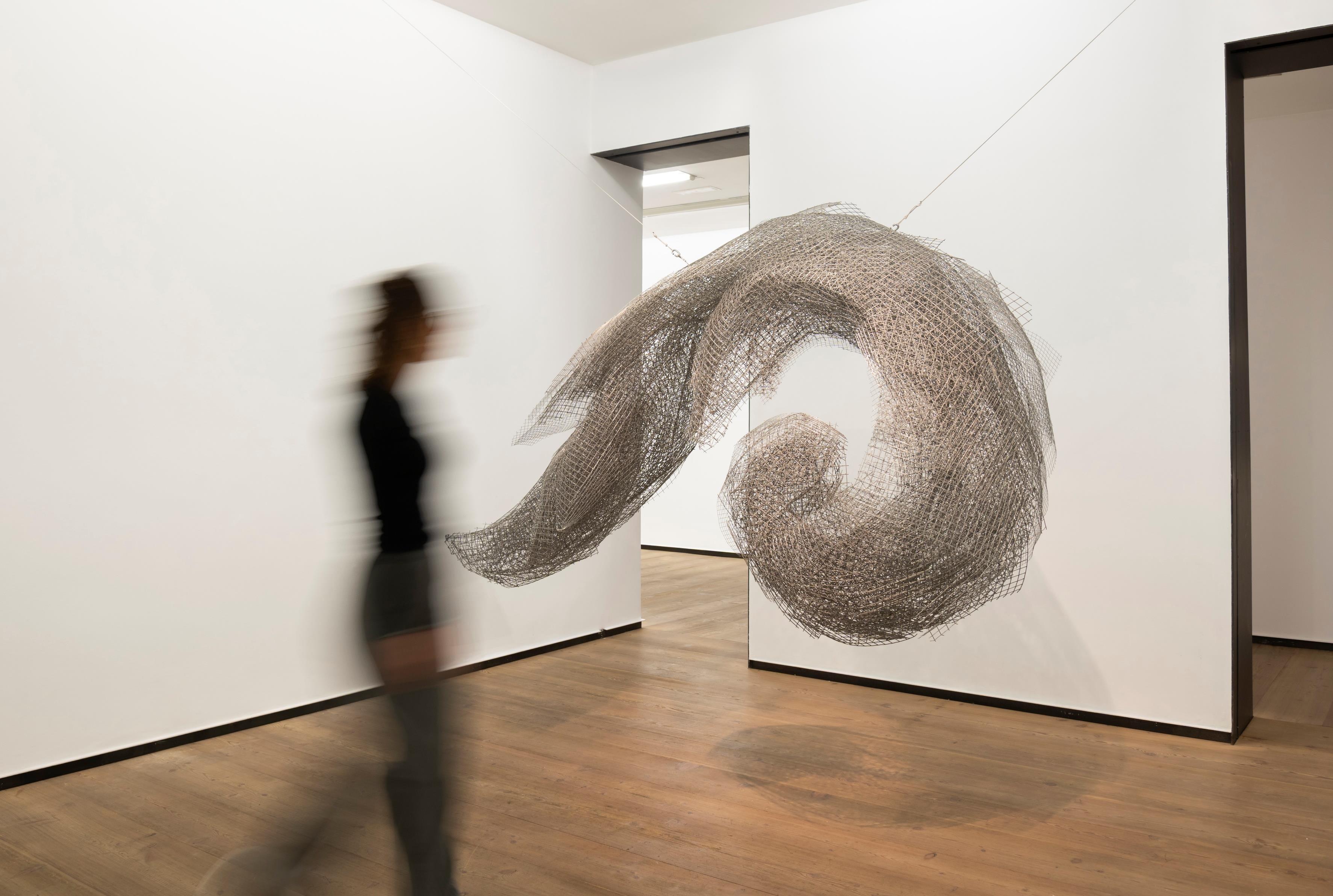

ESTE CATÁLOGO DE

HA SIDO REALIZADO CON MOTIVO DE LA EXPOSICIÓN CELEBRADA EN LA GALERÍA RAFAEL PÉREZ HERNANDO
ENTRE LOS MESES DE MAYO Y JULIO DE 2025.

